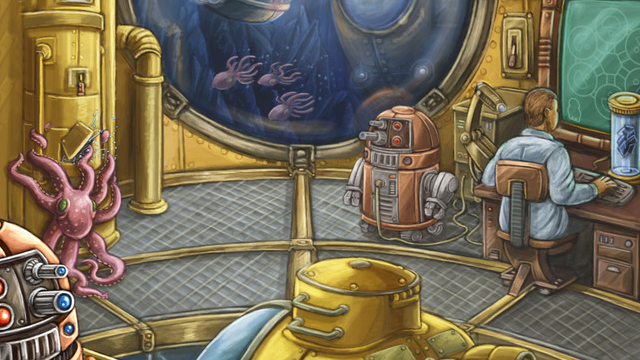
In general, I am a fan of the way Stefan Feld designs games. His creations (like Trajan, Rialto, The Castles of Burgundy and Notre Dame) typically feature several point-generating paths, a simple yet intricate way to navigate them and, frequently, some sort of negative element that must be mitigated. You often have to plan moves several steps ahead, and it often feels as if you never have enough time or actions to do everything you need to get done. There are definitely a few titles of his that fail to grip me or even actively turn me away (Macao comes to mind here), but for the most part, I am willing to give any new release of his a fair shot.
A fun theme helps, of course, and to be perfectly honest that was one of the first elements that attracted me to AquaSphere. When I am not playing games, I work in science (put another way: science funds my insane gaming habit). I also have a strong fondness for water and aqueous life. So a game based around undersea research in a “SeaLab” style structure? Yeah, sign me up.
In AquaSphere, from two to four players each takes control of a pair of scientists. The first is an engineer responsible for programming a small fleet of robots. The other is a researcher who puts those robots to use in the various domes of the facility. Players essentially alternate between these two roles from turn to turn.
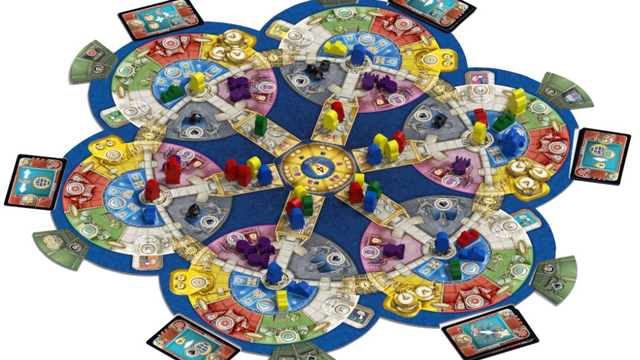
Programming a robot is usually done by moving your engineer on their board to one of seven compartments, divided into three tiers connected by one-way paths. Each compartment programs one robot for a specific task, and the locations of those tasks change in each of the game’s four rounds. Once per round, a player can also spend three time tokens to freely program a robot for any task. It is important to note that a player can never have more than two robots programmed at any given time. Also, a player may choose to pass for the remainder of the round only once their engineer has reached the third and final programming tier.
To use a programmed robot, a player first moves their researcher to the dome in which they want to execute the action. Each pair of adjacent domes is connected by an airlock that costs 0, 1 or 2 time tokens to pass through. Then the programmed robot is placed in that dome’s control ring, sending any existing robot to that dome’s waiting room. If that pushes the waiting room above its capacity (one more than the number of players), each player returns all but one of their robots from that room to their personal boards. It pays to spread yourself around to avoid having too many of your robots sent back to you, but that can cost quite a lot of time.
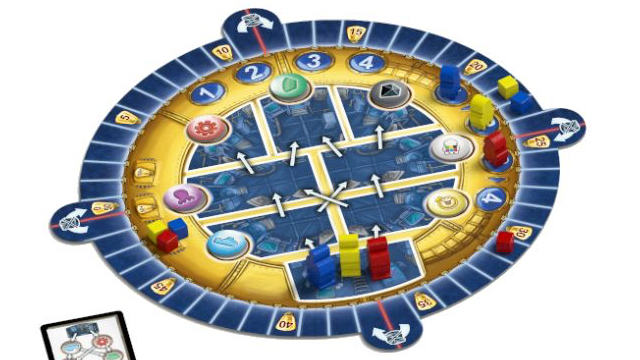
Actions robots can take include expanding a player’s personal lab, gaining more time tokens, obtaining crystals, picking up a special card that can offer either a one-time or continuous bonus, deploying a submarine to a dome in which they do not already have one, eliminating octopods or programming another robot based on their current dome’s capability. Players are limited as to how many crystals, time and cards they can have at any time, as well as how many octopods they can deal with in a single action; these capabilities can be increased with lab expansions.
Once all players have passed, the round is scored. Players earn one time token per submarine they have deployed, one point per robot they have programmed without them being returned (this is also limited by how many subs they have placed) and an increasing number of points for crystals in their possession. Whoever has the most active robots in the domes’ control rings earns a bonus, but octopods present in any player’s controlled dome(s) deduct from the points awarded, and negative totals are a possibility. In addition to these intermediate score phases, players also earn points by deploying subs, acquiring cards, or dealing with octopods.
Whenever a player’s score crosses specific point thresholds, they must forfeit either a crystal or a programmed robot or else they cannot pass. (I like to think of these as grant-justifying progress reports.) These barriers also serve as safety nets, as once crossed a player’s score cannot fall beneath them due to octopod infestations. At the end of the game there is a final bonus scoring phase after the usual round end scoring; during this, the point barriers do not apply.
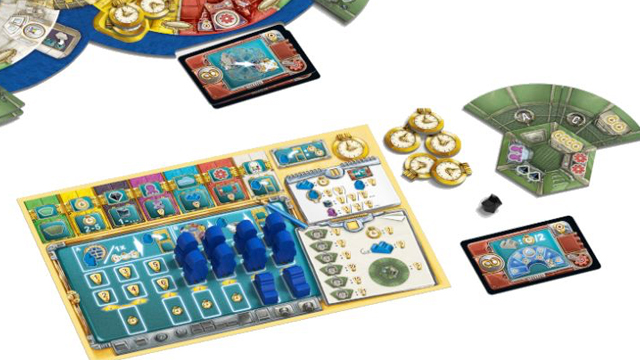
Four rounds is not a lot of time. You are guaranteed to be able to program at least three robots, but rarely more than five. There are ways to unload additional robots for scoring purposes, but this is basically all you get each round to make meaningful progress. In addition to the limitations of time, the in-game time tokens also a precious commodity. You need this to both move through the domes as well as to deploy subs, not to mention your once-per-round extra program action. If you run out you will either be stuck in your current dome (adjacent to the one zero-cost lock if you are very lucky) or be forced to return one of your programmed (but unused) robots to gain two time tokens — neither of which is an attractive prospect, I assure you.
The best way to gain an edge over the limitations placed upon you is to use the card action. These will often let you gain extra programming opportunities, provide rewards for programming specific actions with your engineer, or give you discounts for certain actions. Of course, unless you upgrade your lab with specific parts, you are restricted to only two cards over the entire game — even if the ones you pick up are one-time uses — so choose wisely from the options that are randomly presented to you each round.
In fact, “choosing wisely” is pretty much the name of the game, as I mentioned at the beginning. Your ability to plan from round to round is going to be limited thanks to the changing programming options, but within each round your biggest problem is probably going to be the other players getting to the stuff you want before you. Assuming you can even get to them yourself, that is.
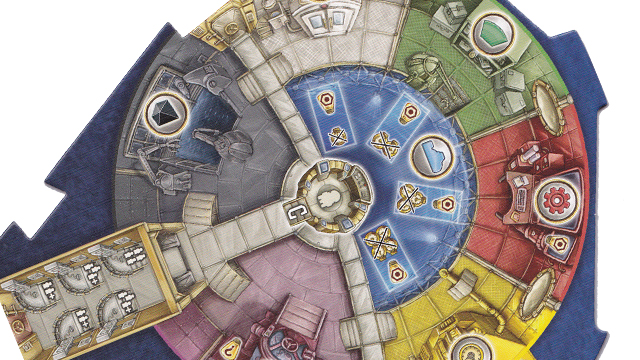
For all of its complexity, AquaSphere is a quick-playing game that can usually be finished in a little over an hour. Your first game will not go nearly as smoothly, obviously, but once you get the hang of how the two main actions work, the game falls into place and all you need to do is focus on strategy. That’s easier said than done, but that’s what makes the game fun.
AquaSphere retails for $60.



















